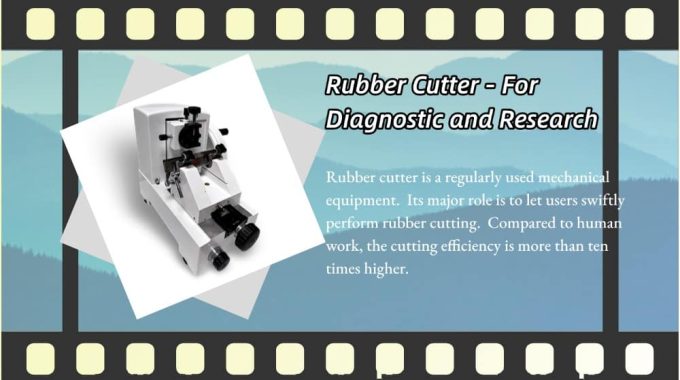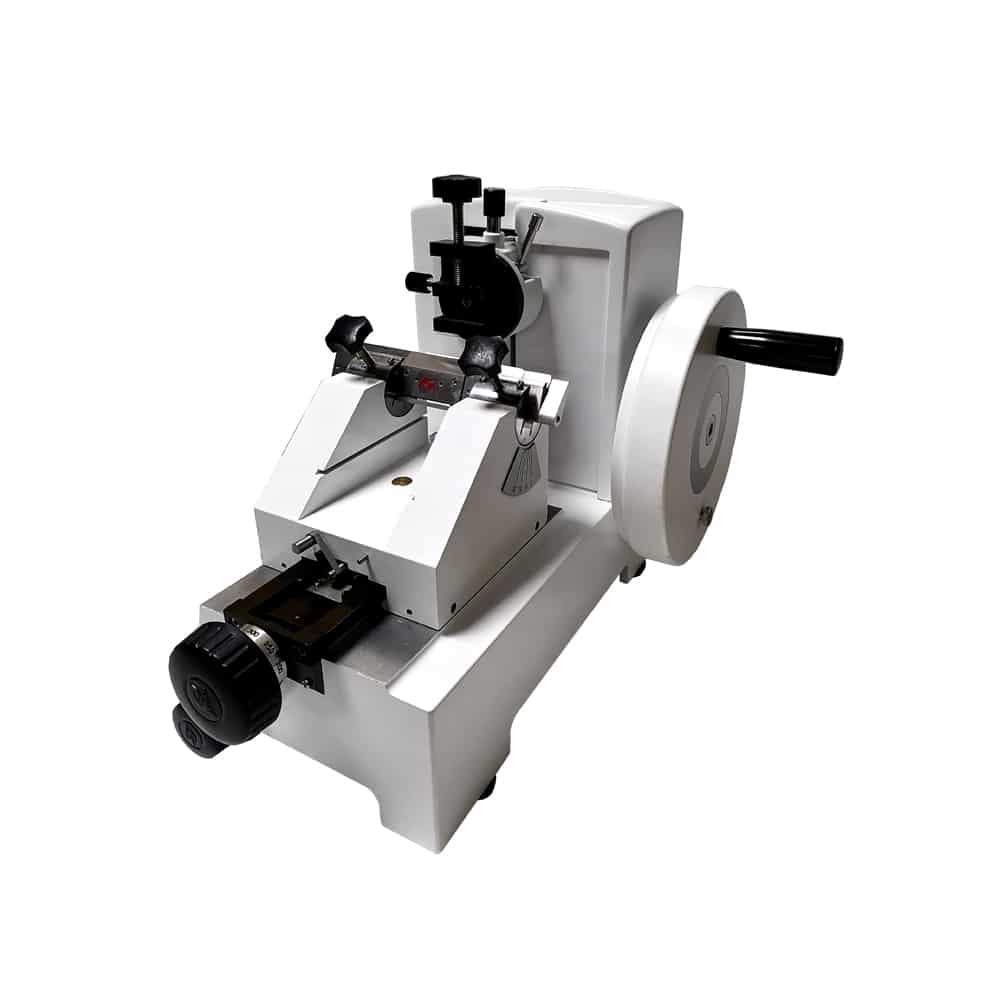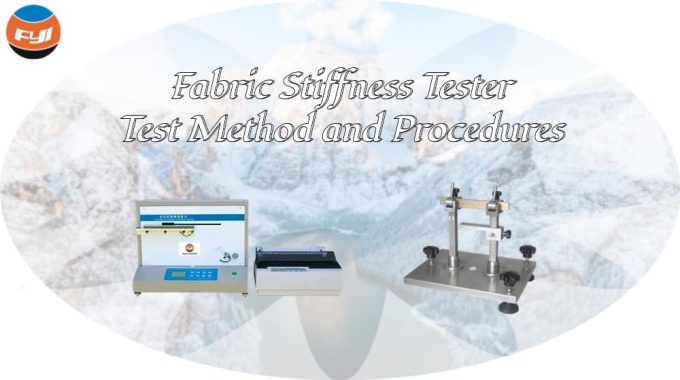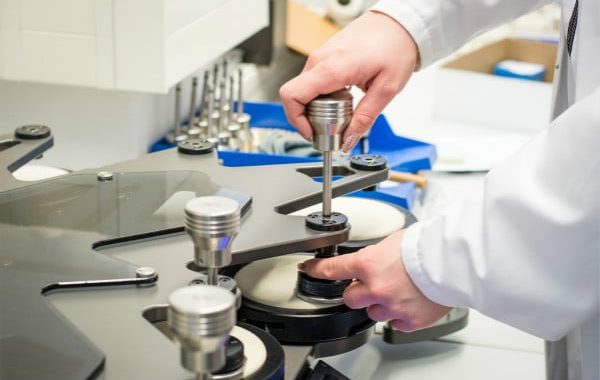
Rubber Cutter – For Diagnostic and Research
Rubber cutter is a regularly used mechanical equipment. Its major role is to let users swiftly perform rubber cutting. Compared to human work, the cutting efficiency is more than ten times higher. These high-efficiency rubber cutting machines are specifically designed for rubber manufacturing companies. Rubber cutting machine production significantly increases cutting efficiency while saving a significant amount of labor costs.
Contents
Types of rubber cutter
Laser rubber cutting machine
A high-precision rubber cutting machine that employs laser technology is called a laser rubber cutting machine. Its advantages are high cutting accuracy, fast speed, good incision quality, and can accurately cut various complex shapes. Furthermore, a laser rubber cutting machine’s high level of automation and ease of use may significantly increase production efficiency. However, maintaining and operating a laser rubber cutting machine requires skilled operators and comes at a somewhat expensive cost.
Oscillating Knife Rubber Cutting Machine
A machine that cuts using a vibrating blade is called a vibration knife rubber cutting machine. This gadget is easy to use, inexpensive, and has a straightforward design. It works well for quickly cutting a lot of rubber materials. The vibration knife rubber cutting machine is adequate for typical production demands even if its cutting precision and incision quality are not as good as those of the laser rubber cutting machine. It should be mentioned that in order to maintain cutting precision and quality, the vibration knife rubber cutting machine requires a new blade after extended usage.
Mechanical blade rubber cutting machine
Rubber cutting machines with mechanical blades are a type of conventional rubber cutting apparatus. The equipment is appropriate for cutting small and medium quantities of rubber materials and has the features of being reasonably priced, easy to use, and convenient to maintain. For various manufacturing demands that do not need high precision, the mechanical blade rubber cutting machine is a cost-effective and practical option, despite its relatively low cutting accuracy and incision quality. It should be mentioned that the rubber cutting machine with a mechanical blade has a somewhat complicated mechanical structure that needs constant upkeep.
In conclusion, each of these three widely used rubber cutting machines has pros and cons of its own. In addition, rubber cutting equipment can be categorized based on the level of automation and application scenarios, such as fully automatic CNC cutting machines (CNC control) and manual/semi-automatic cutting machines; for businesses that need high-precision, complex shape cutting and rapid production, laser rubber cutting machines can be chosen; for businesses that need low cost, fast cutting, and simple operation, vibration knife rubber cutting machines can be chosen; and for businesses that need economical and practical, small and medium batch production and simple maintenance, mechanical blade rubber cutting machines can be chosen; or industrial-grade heavy-duty cutting machines (such as tire manufacturing) and laboratory precision cutting machines (such as material testing sample preparation)
Introduction to the DW1115 Series Manual Rubber Cutter
A professional medical and laboratory instrument made to satisfy the exacting standards of pathology, biology, and forensic diagnostics is the DW1115 series manual rubber cutter. Because it can create high-precision paraffin sections of plant and animal tissue, this manual slicer is a crucial sample preparation instrument that offers a precise test foundation for scientific study, legal investigations, and disease diagnosis. Because of its robust design and easy-to-use features, the DW1115 series is trusted by medical schools, hospitals, forensic departments, health institutes, and agricultural research agencies worldwide. For professionals who value dependability and speed of operation, its small size and unparalleled precision make it an essential instrument.

Key applications across industries
For healthcare and research
Numerous applications are supported by the DW1115 Series’ engineering, including:
- Medical diagnostics: Assists in the identification of illnesses like cancer or infections by preparing extremely thin tissue slices (1–35 μm) for microscopic analysis.
- Forensic science: Provides forensic pathologists examining tissue samples in criminal or legal investigations with reliable, reproducible results.
- The ability to precisely slice plant and animal specimens for the study of illnesses, genetic features, or environmental influences is made possible by veterinary and agricultural research.
- During outbreaks or contamination investigations, public health initiatives help sanitation and antiepidemic stations handle samples quickly.
In challenging environments
The DW1115 may be used in a variety of contexts, including sterile medical laboratory and agricultural activities. It is perfect for isolated areas or institutions with limited resources since it operates manually, removing the need for power sources.
Advanced features and technical specifications
Precision engineering for unmatched accuracy
- Manual operation, maximum control: By enabling tactile accuracy in cutting thickness adjustment, the handwheel-driven design reduces mistakes brought on by automated systems.
- Customize cuts beyond 35μm for thicker samples, or achieve slices as small as 1μm (with a precision error of ±10%) for delicate tissues.
- Superior components: Even with repeated usage, durability is guaranteed by strengthened mechanical parts and stainless steel blades.
Technical specifications
| Parameter | Details |
| Slice Thickness Range | 1–35μm (standard); customizable for thicker samples (>35μm) |
| Thickness Adjustment | Minimum increment of 1μm for granular control |
| Section Area | Up to 50×40mm, accommodating a wide variety of specimen sizes |
| Precision Error | ±10%, ensuring reproducibility for critical diagnostics |
| Dimensions | Compact footprint (470×320×320 mm) for space-constrained environments |
Why the DW1115 series stands out
Advantages over automated alternatives
- Cost-effective solution: CNC systems don’t require costly software, motors, or maintenance.
- Reduced training time: New users can rapidly become proficient with the gadget because to its intuitive manual operation.
- Durability: Longer service life and a decreased chance of faults are associated with fewer electronic components.
- Portability: Small and light, perfect for mobile diagnostic units or multi-site labs.
Enhanced safety and ergonomics
- Secure clamping system: Holds specimens firmly in place during cutting, reducing slippage risks.
- Protective blade guards: Minimize accidental contact with sharp edges.
- Ergonomic handwheel: Designed for comfortable operation during prolonged use.
Optimizing workflow efficiency
Streamlined sample preparation
The manual design of the DW1115 makes sectioning easier:
- Mounting the specimen: Place samples that are embedded in paraffin on the stage.
- To calibrate thickness, turn the handwheel to the appropriate micron setting.
- Precision cutting: Create consistent parts by smoothly gliding the blade.
- Retrieve sections by moving slices to slides for examination or staining.
Maintenance best practices
- Blade maintenance: To combat corrosion, clean and lubricate blades on a regular basis.
- To ensure accuracy, verify the thickness parameters once a month.
- Inspection of components: Every year, check mechanical parts and tighten screws.
Conclusion
More than just a tool, the DW1115 Series manual rubber cutter represents a dedication to accuracy, dependability, and operational excellence. This cutter provides the precision and robustness required by contemporary labs, whether it is being used for illness diagnosis, agricultural research advancement, or forensic investigation.
With the DW1115 Series, you can enhance your lab’s capabilities right now—every slice counts.


